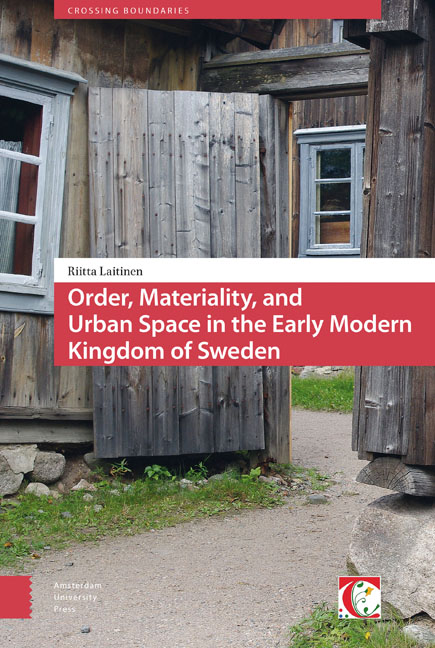Book contents
2 - Spatial Rules of the Urban Homes
Published online by Cambridge University Press: 12 December 2020
Summary
Closed and Porous Boundaries
Research has shown that urban homes in early modern Europe were often open for neighbours to come in, and the authorities had more rights in the house's or the family's affairs than after the early nineteenth century, when the home began to be defined in terms of privacy. Nevertheless, doors, gates and windows marked the inescapably material boundaries of homes. Like the materially less firm and less clearly definable locations such as doorways, thresholds, yards and alleys, they provided specific stages where urban encounters could take place.
Joachim Eibach writes that the domestic totality opens up to examination through its artefacts and practices in relation to visibility and accessibility, the formation of the front and back of a stage, and the inside and the outside. The examination in this chapter moves along similar lines, in exploring encounters and boundaries inside and around domestic buildings. Looking at the practices which were connected to the boundaries of homes, as will be done here, offers an approach to the relationships of the community and its members to their dwellings as material and social sites of encounter, co-presence, and shared habitation.
First, one needs to explore what kinds of material borders existed, and how and why and to what extent they were open or permeable. A good way to start is with the action of locking the doors or the gates, a practice that gives a message of the space being closed to outsiders. Locking up was a common habit both in Turku and elsewhere in Europe. For England, Amanda Flather writes that as robbery was common, house and outbuilding doors were usually locked. Lena Cowen Orlin points out that good rented rooms in London had locks in their doors, whereas poor ones had only latches. In the German regions, Gerhard Fouquet writes, doors were usually locked at nine o’clock, because there were so many thieves. While simple protection of property was one main reason for locking up, further inquiry into why and how the doors and the gates were locked illuminates the communal order and the townspeople's relationship with their buildings and smaller units of dwelling.
- Type
- Chapter
- Information
- Publisher: Amsterdam University PressPrint publication year: 2017



